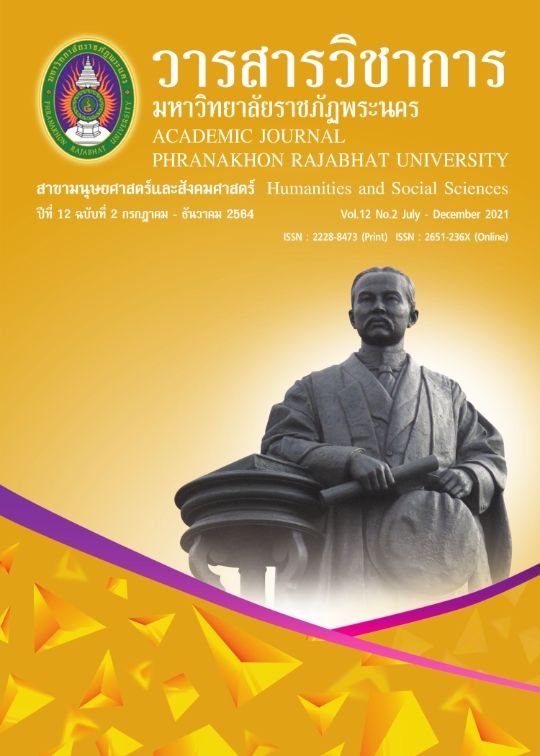THE APPLICATION OF MULTIMEDIA TECHNOLOGY IN TEACHING AND LEARNING MATHEMATICS OF GRADE 5 BHUTANESE STUDENTS
Keywords:
Multimedia Technology, Learning Achievement, Learning Satisfaction, Video ClipsAbstract
The learning objectives of this study were to find out students’ learning achievement and satisfaction towards the use of multimedia technology (video clip and PPT) in teaching and learning mathematics in grade 5 Bhutanese classroom. A mixture of quantitative and qualitative methods was employed to gather the required data. The instruments used to gather the quantitative and qualitative data were achievement tests (pretest and posttest) and semi-structured interview respectively. The quantitative data were analyzed using Paired Sample t-test in the computer program and qualitative data were analyzed using the thematic analysis technique. The analysis of the pretest and posttest scores through Paired Sample t-test revealed a higher mean score in the posttest (14.72) than the pretest (8.81) with a mean difference of 5.91. The significance (p) value was 0.001 which indicated that the use of multimedia technology was effective in teaching and learning mathematics. Likewise, the data collected through the semi-structured interview responses revealed positive satisfaction. This study recommends that teachers may also try teaching other topics in mathematics and other subjects using multimedia technology to make their lessons interesting and engaging, thereby enhancing students’ performance.
References
Alkhasawneh, S. (2016). The Effect of Multimedia-Aided Teaching in Kindergarten Children Mathematical Achievement and attitude. Paripex-Indian Journal of Research, 4(5), 96-97. Doi: 10.36106/PARIPEX
Allison, E., & Goldston, M. J. (2018). Modern Scientific Literacy. A Case Study of Multiliteracies and Scientific Practices in a Fifth Grade Classroom. Journal of Science Education and Technology, 27(3), 270-283
Almalki, S. (2016). Integrating Quantitative and Qualitative Data in Mixed Methods Research—Challenges and Benefits. Journal of Education and Learning, 5(3), 288-293. Doi:10.5539/jel.v5n3p288
Bhutan Board of Examination. (2008). BCSC 2007 Pupil Performance Report 2007, Bhutan. Thimphu: Bhutan Board of Examination.
Bhutan Council for School Examinations and Assessment. (2019). GRADE VI CBAT 2018. Retrieved from http://www.bcsea.bt
Clapham, C., & Nicholson, J. (2009). The Concise Oxford Dictionary of Mathematics (4th ed.). New York: Oxford University Press.
Dolma, P. (2016). Investigating Bhutanese Mathematics Teachers' Beliefs and Practices in the Context of Curriculum Reforms. Office of Education Research. Retrieved from https://eprints.qut.edu.au/95624/1/Phuntsho_Dolma_Thesis.pdf
Dukpa, P. (2015). Bhutanese student's attitude towards mathematics: Findings from a cross-sectional survey of grade six students. Rabsel -the CERD Educational Journal, 16 (2), 37-56.
Fallon, E., Walsh, S., & Prendergast, T. (2013). An Activity-based Approach to the Learning and Teaching of Research Methods: Measuring Students Engagement and Learning. Irish Journal of Academic Practice, 2(1), 1-24. Doi:10.21427/D7QP44.
Fu, S. J. (2013). ICT in education: A critical literature review and its implications. International Journal of Education and Development using Information and Communication Technology (IJEDICT), 9(1), 112-125.
Hasan, R. & Gebreyohannes, M. H. (2016). Impact of Multimedia in Teaching Mathematics. International Journal of Mathematics Trends and Technology, 1(30), 80-83. Doi: 10.14445/22315373/IJMTT-V39P510.
Hom, E. J. (2013). What is Mathematics? Live Science. Retrieved from https://www.livescience.com/38936-mathematics.html
Hong, K. S., & Koh, C. K. (2002). Computer anxiety and attitudes toward computers among rural secondary school teachers: A Malaysian Perspective. Journal of Research on Technology in Education, 35(1), 27-48.
Lopez, D. (2016). The Use of Authentic Videos, as a Teaching Strategy, to Lower Some Boredom Signs Shown by Intermediate English students at San Ignacio University Loyola when Practicing Grammar, in Order to Improve Results. College of Piura: Faculty of Education Sciences.
Mayer, R, E. (2009). Multimedia Learning. Second Edition. Cambridge University Press.
Naidoo, J. & Hajaree, S., (2021). Exploring the perceptions of Grade 5 learners about the use of videos and PowerPoint presentations when learning fractions in mathematics. South African Journal of Childhood Education 11(1), 1-12. Doi: 10.4102/sajce.v11i1.846. Retrieved from file:///C:/Users/Rigzin/Downloads/Exploring_the_perceptions_of_Grade_5_learners_abou.pdf
Pavithra, A., Aathilingam, M., & Prakash, M., S., (2018). MULTIMEDIA AND ITS APPLICATIONS. International Journal for Research & Development in Technology, 10(5), 271-276. Retrieved from https://www.researchgate.net/publication/329417059_MULTIMEDIA_AND_ITS_APPLICATIONS
Peldon, D. (2018). The effects of cooperative learning strategy on sixth grade Bhutanese students learning satisfaction in social studies class (Master’s thesis). Bangkok, Thailand: Rangsit University.
Policy and Planning Devision. (2006). 25th Education Policy Guidelines and Instructions. Thimphu: Ministry of Education.
Royal Education Council of Bhutan. (2012). Mathematics Curriculum Framework. Thimphu: Royal Education Council.
Shaikh, A. T. (2011). USE OF MULTIMEDIA TECHNOLOGY IN LIBRARIES. Retrieved from https://www.researchgate.net/publication/288653295_USE_OF_MULTIMEDIA_TECHNOLOGY_IN_LIBRARIES
Stephens, C., Ascencio, R., Burgos, A., Diaz, T., Montenegro, J., & Valenzuela, C. (2012). Film circles: Scaffolding speaking for EFL students. English Teaching Forum, 2, 14-20.
Subba, C., (2011). Teaching Geography Lesson Using Multimedia Technology in Wochu Lower Secondary School. Rangsit University, Pathumthani
Takehiro, H. (2015). A Study on the Type of School during the Dawn of Modern Education in Bhutan. Annual International Conference of the Bulgarian Comparative Education Society. Sofia, Bulgaria: Bulgarian Comparative Education Society.
Tobgay, S. (2014). Education System in Bhutan - Past, Present, and Future A Reflection. Retrieved from http://www.judiciary.gov.bt/education/EducationCJB.pdf
Walsh, M. (2017). Multiliteracies, Multimodality, New Literacies, and…. What Do These Mean for Literacy Education? In Inclusive Principles and Practices in Literacy Education (pp. 19-33). Emerald Publishing Limited.
Witzel, B. S., & Riccomini, P. J. (2007). Optimizing math curriculum to meet the learning needs of students. Journal of Preventing School Failure, 52(1), 13–18. Doi: 10.3200/PSFL.52.1.13-18
Yu, P. T., Lai, Y. S., Tsai, H. S., & Chang, Y. H. (2010) Using a Multimedia Learning System to support music instruction. Educational Technology and Society, 12(3), 151-162.
Yunianti, D. (2014). Improving Grade Ten students' reading comprehension through English graphic organizers at SMA 11 Yogyakarta in the academic year 2013/2014 (Thesis, Yogyakarta State University). Retrieved from https://eprints.uny.ac.id/19840/1/Dewi%20Yunianti%2009202244040.pdf
Downloads
Published
How to Cite
Issue
Section
License
Copyright (c) 2021 Academic Journal Phranakhon Rajabhat University

This work is licensed under a Creative Commons Attribution-NonCommercial-NoDerivatives 4.0 International License.
"บทความวิชาการในวารสารฉบับนี้ ถือเป็นความรับผิดชอบของผู้เขียนเท่านั้น"
สงวนลิขสิทธิ์ตามพระราชบัญญัติลิขสิทธิ์




